Going Racing
But first, some business-oriented things. I haven’t answered the phone in more than a month because more than enough people have been booking online, which works out well for everyone. This will change as the seasons change. I start answering the phone again when online bookings slow down. This usually happens around August and September, and we’re getting close.
I have more time for “projects” during the off months, and I’m more likely to take on bikes that need a lot of work. If you’re looking to have something built, it’s a good idea to get with me now and start planning.
NEW TOOLS
I’ve had this thing since May, and I’ve run through about a bottle’s worth of gas working with it.
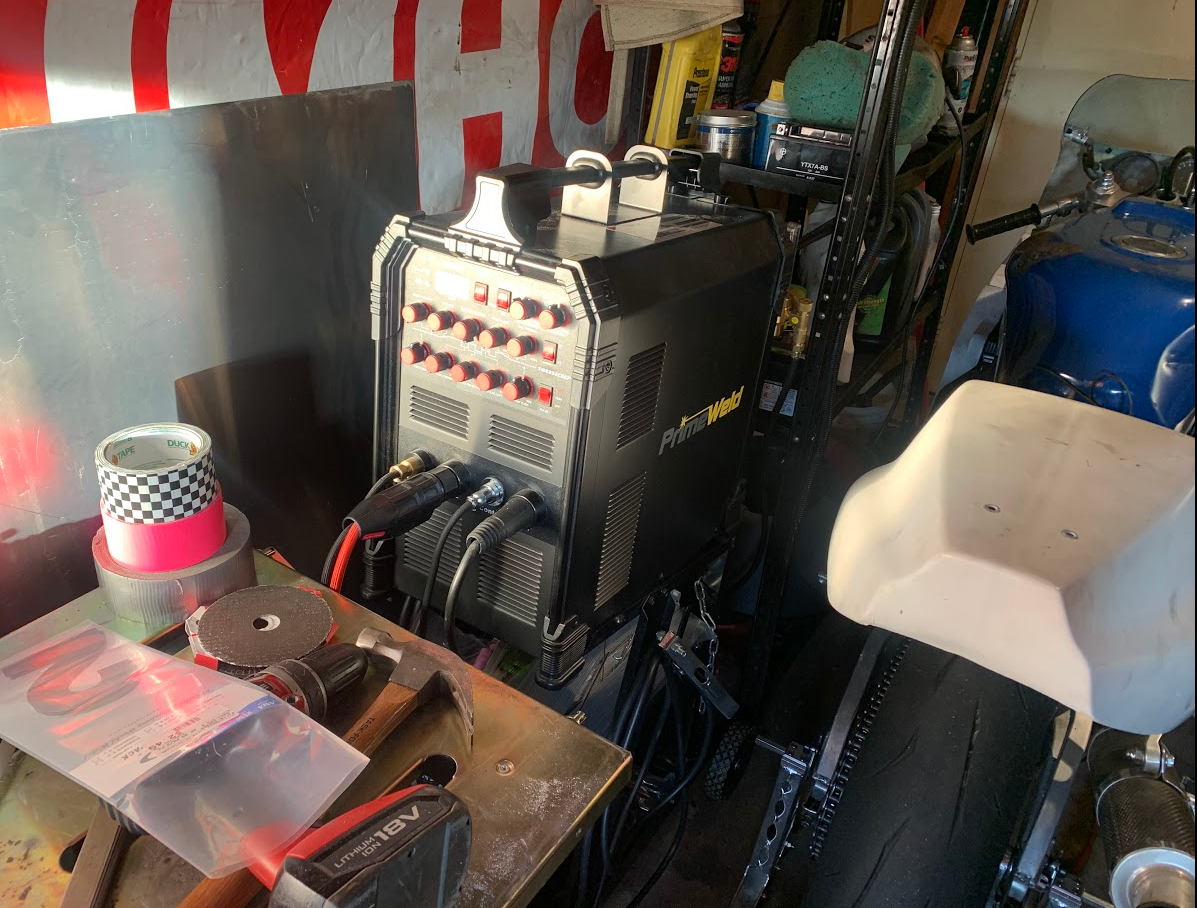
It’s an AC/DC TIG welding machine. This means I can weld mild steel, stainless steel, and my favorite – aluminum! I’ve run about a tank’s worth of gas through it at first practicing on aluminum coupons and then repairing broken parts and making my own parts. It’s definitely a whole different process from MIG welding, which is short for “Anyone Can Weld” (the letters are silent).
MIG welding mild steel takes minutes to learn and not much time to master. TIG welding aluminum takes minutes to learn and from what I can tell a hell of a lot of time to get good at. With MIG welding you hold a torch in one or both hands, pull a trigger, and “shoot” the weld onto your work piece. TIG welding is a whole different ball game. You hold a torch in one hand, filler rod in your other hand, and use a foot pedal to control the amount of heat you want to put into your work piece. All of that said, it’s not much different from riding a motorcycle, which requires inputs and actions from multiple limbs and appendages as well.
I made a part for one of my bikes.
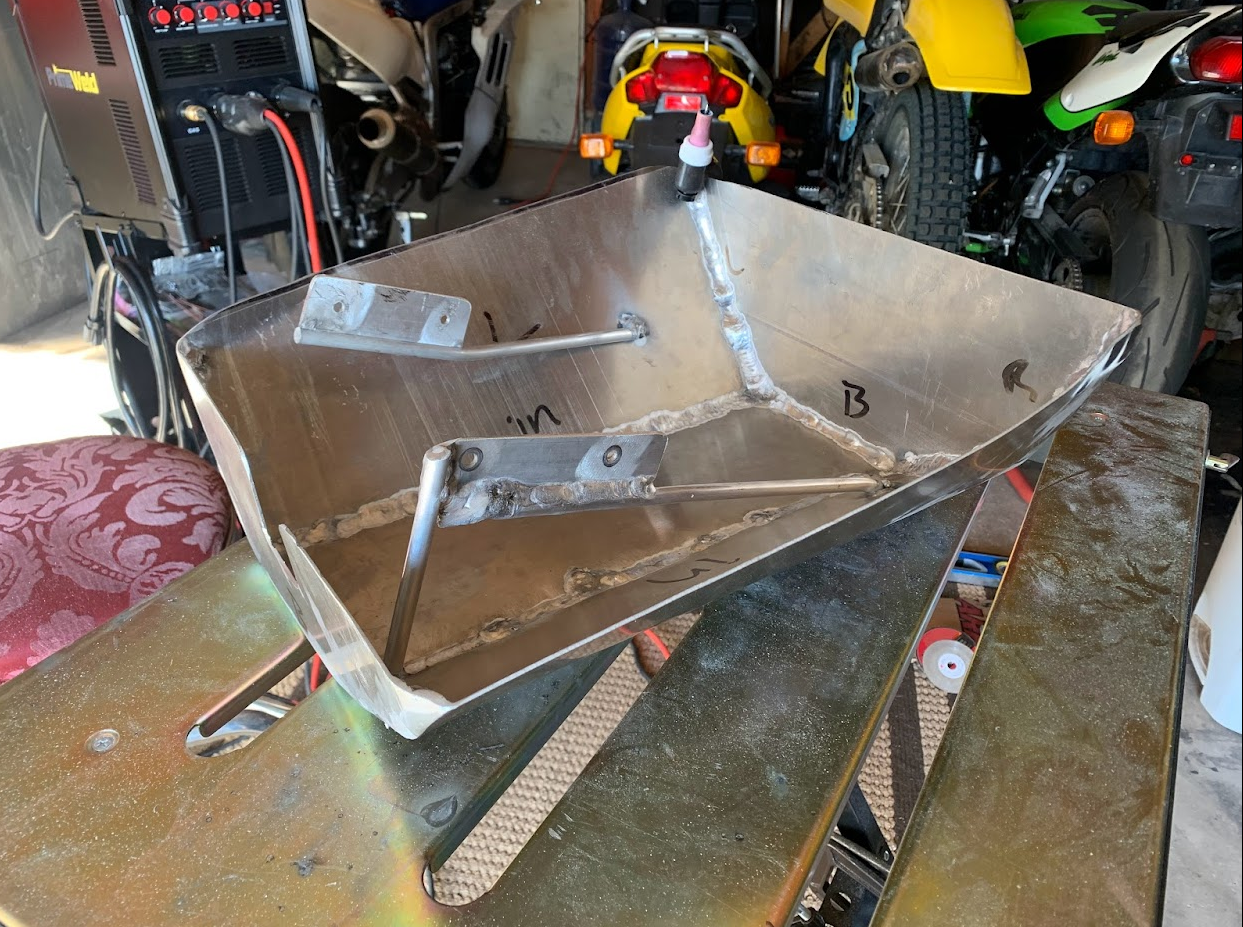
It’s an aluminum belly pan for the Ninja 650 race bike. This is the very first part I’ve ever made out of aluminum, so all of the professional welders and fabricators out there can just shut up because I know the welds are ugly as sin, and the part itself is ugly too. Well it doesn’t have to be pretty! All it has to do is sit there under my bike’s engine and keep too much oil from getting on the ground if I happen to send a rod through its crankcases during a race. My goals were to make a part that
- Bolted to the bottom of the engine
- Holds fluid
- Passes the MRA’s race day technical inspection
The part checks the boxes. There is no box for “pretty”. This was version 1.0. It has since undergone a revision to make it prettier but surprise! It’s still pretty ugly!
MRA SUPERSTREET at Round 3
My plan for the year was to do all of the MRA’s SUPERSTREET (SS) events on the Ninja 650, so I was at High Plains Raceway for Round 3 during late June.
It was cold in the morning and rained a bit, but all of that cleared up by the afternoon for the SS mock race. The event got pushed to pretty late in the day on account of crashes, one rider had to be airlifted to the hospital in a helicopter, which makes the track go cold for an hour or two.
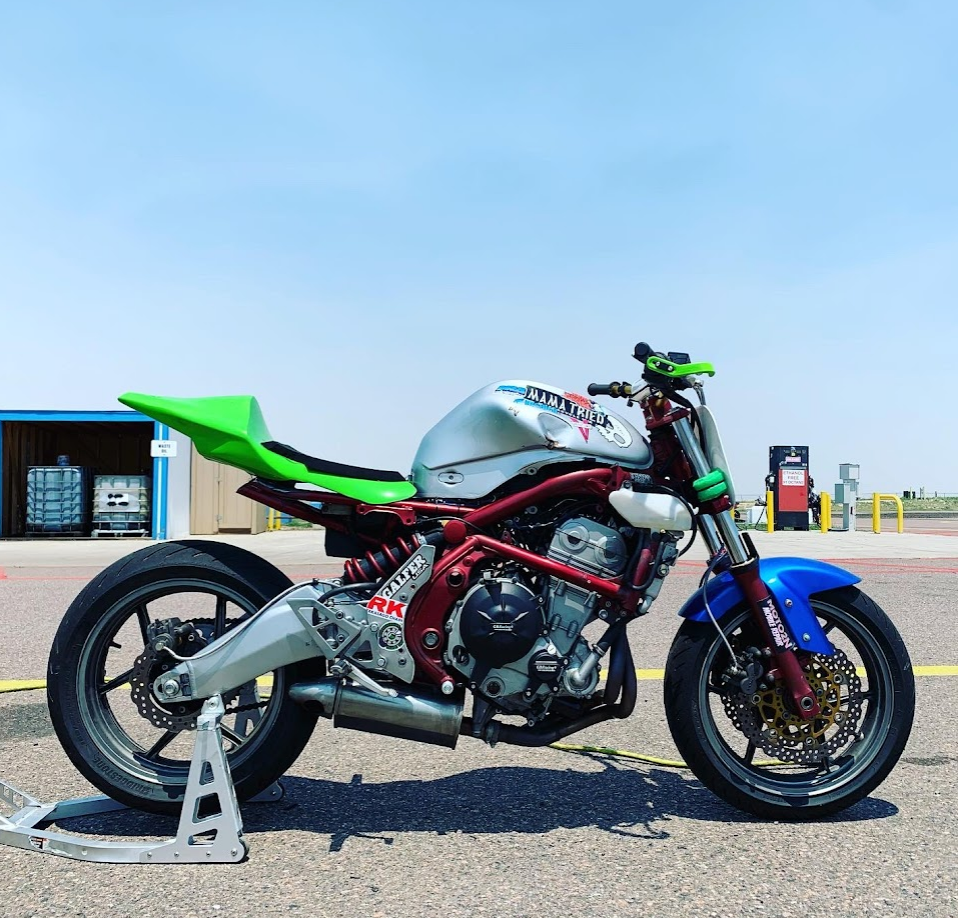
Other than an aluminum swingarm, the bike was in the same configuration as at the first event at PPIR. The aluminum swingarm is much lighter than the stock steel part, resulting in less unsprung weight. To be perfectly honest I can’t tell any difference in performance, but the aluminum part is much cooler looking, which makes me feel better, which makes me more confident, which makes the bike work better. I’m sure at some level beyond where I’m at the reduction in unsprung weight would make a difference in performance, but I’m just not there yet.
The race went off without a hitch. Nobody crashed. I finished 4th out of 7 entries with 3 riders again on much more powerful bikes out front. That said I still finished in front of some much faster bikes. For whatever reason I didn’t feel as confident on the bike that day.
Highlight of the day was getting the rear end of my bike a bit loose in Turn 11 and close enough to the guy behind me for him to see what I’d done. It’s one thing to ride a bike fast with plenty of grip, but it’s nice to know my body knows what to do when things get a little squirrely.
What this event did though is it solidified in my mind that I wanted to go racing and in a bad way: real racing with a transponder, lap times, the chance at trophies, season points, bragging rights, and recognition from the other clubmen.
MRA Mid-Season Race School
After completing two SUPERSTREET events I was technically eligible to petition the new rider director for a novice race license BUT and this is a pretty huge BUT I wanted more instruction, more experience, more guidance, so I signed up for the mid-season race school in early July happening at High Plains Raceway.
I fitted my homemade belly pan and safety wired the bike because I knew I was going to get a novice license after the school and wanted to make sure everything worked properly.
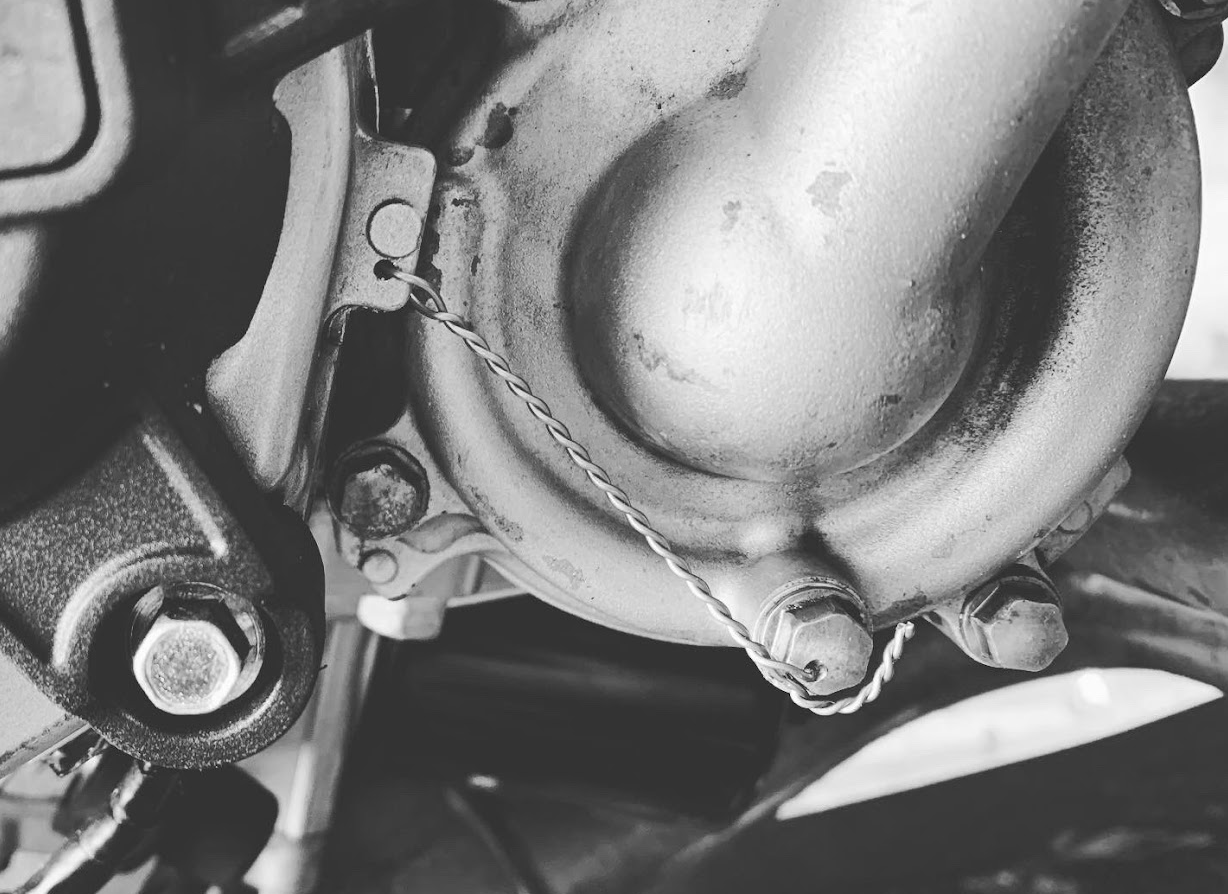
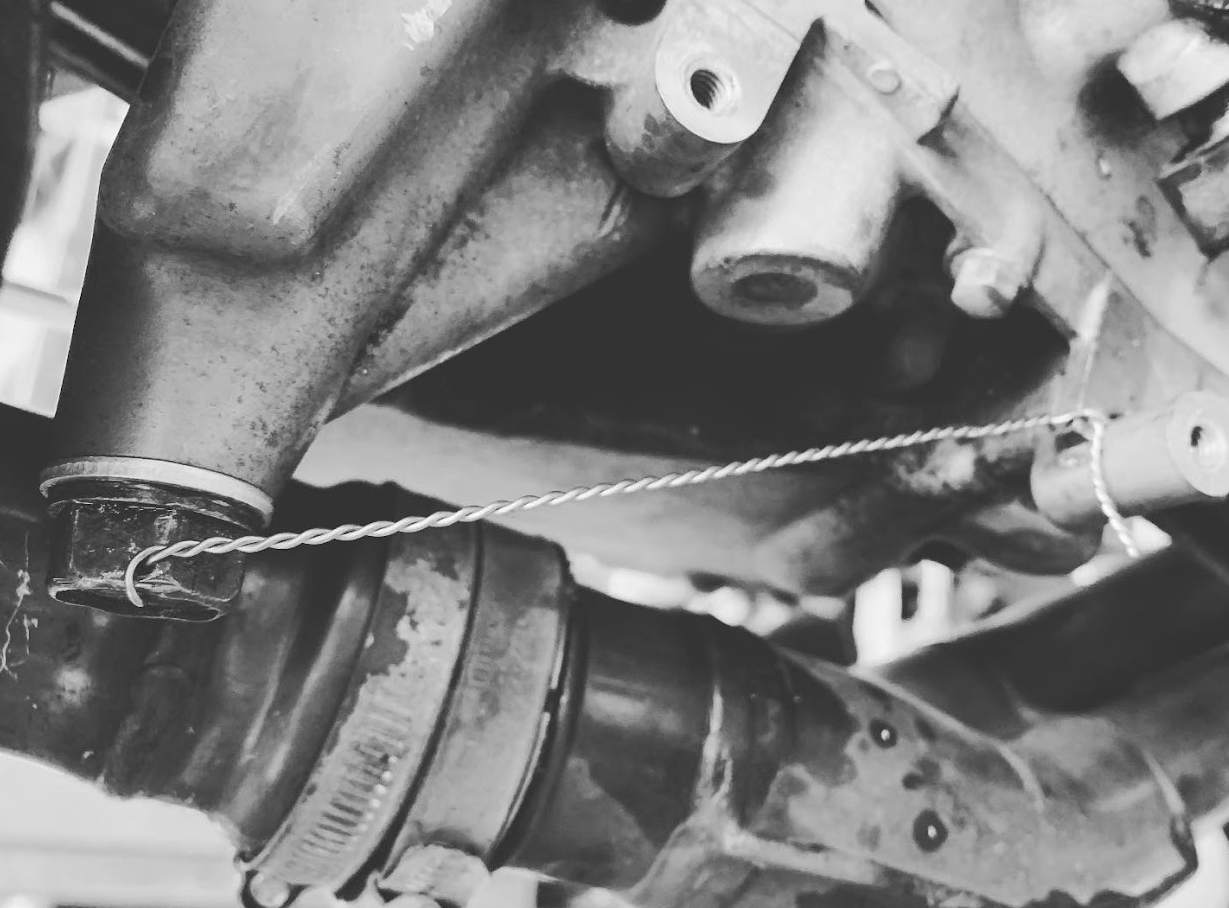
I pitted with a new racing buddy, and our setup was pretty decent with his canopy and my van making for a good makeshift garage setup.
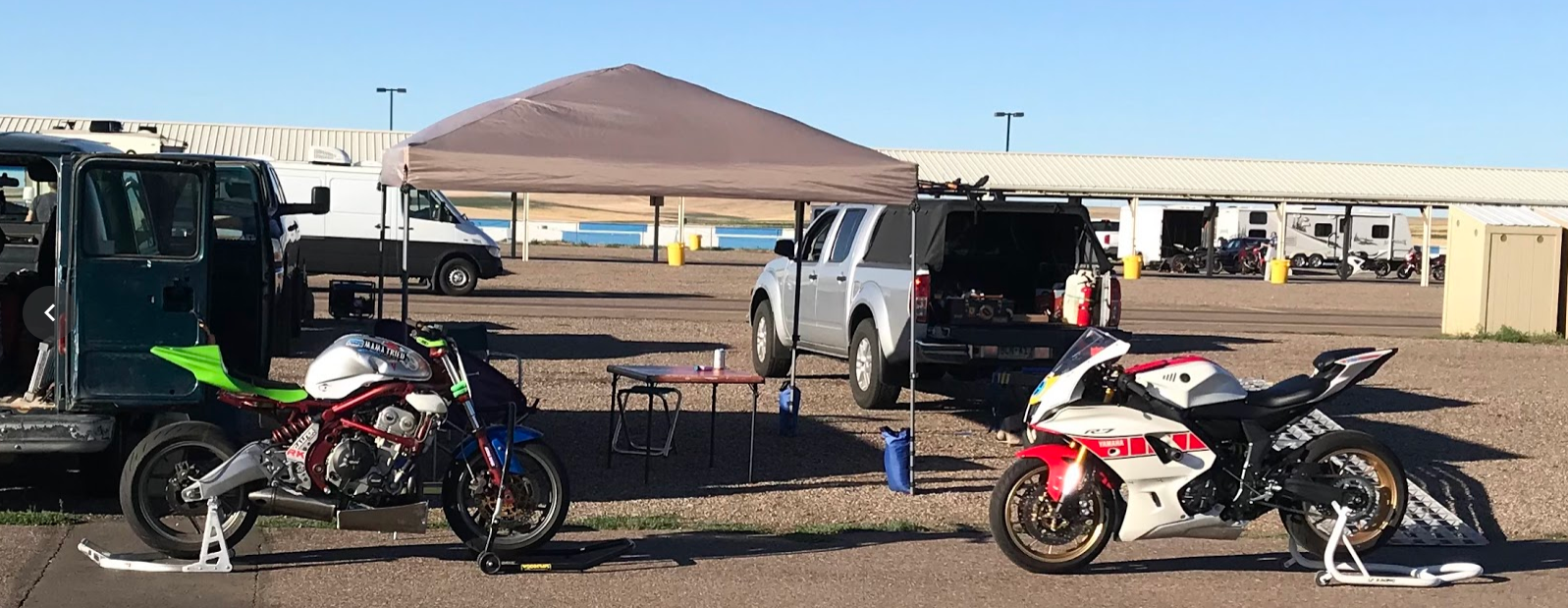
The weather was perfect all day. The classroom session the night before was very similar to the SUPERSTREET classroom sessions and not much new information was introduced, but there were more MRA board members present to share their experiences and offer more color to the class.
The day itself worked out well. I was grouped with some fast kids on slow bikes, and for the most part we were faster than many of the folks on much faster bikes, which made for some interesting traffic going into Turn 4 after the straightaway on the track. They would pass us in the straight, and we would have to pick through them and pass them back in the corners. This wasn’t planned. It was good practice making my way around slower riders.
Where it all went wrong was toward the end of the day. I wasn’t “trying to go fast” at all at any point during the day, which ended up hosing me as I got tired and lost focus. During one of the later sessions I had decided to dial it back a bit and focus on things like reference points and my body position. My goal was to complete all of the necessary steps of going through a corner in the correct order at a lower speed than what I had been doing. It turns out using the same body position and reference points at a lower speed tightens up the radius of the turns, and I ended up clipping the curbing in Turn 1 with my left foot peg, which sent the bike skittering and had me doing a 50′ baseball slide across the track and into the dirt.
We were warned that if we crashed we wouldn’t pass the race school, but there were some mitigating factors explained to me after the fact by the new rider director. These mitigating factors were
- I was aware of what I had done
- I had a pretty good idea of why I crashed by the time the safety team member dropped me off in the pits
- I took ownership of the crash
- I did the right things after the crash (not touching the bike, moving my body to a safe location, waiting for the safety team)
- I’d already completely two SUPERSTREET events without crashing
The new rider director helped coach me through my ideas on why I had crashed and together we came up with a solid answer as to why it happened based on my awareness of the situation and his vast experience racing motorcycles. Loss of focus led to a tighter line than I’d anticipated and when my foot peg contacted the curb while leaning the bike I lost control. It’s not a mistake I’m likely to repeat.
This isn’t the first time I’ve crashed a sport bike on a race track, and I can remember the others in painstaking detail and why they happened. I haven’t repeated the same mistakes, but I have discovered new ones! The idea is to analyze what happened and not repeat mistakes.
All in all it was a good day, and someone managed to take a really good picture of me on the bike before I broke it:
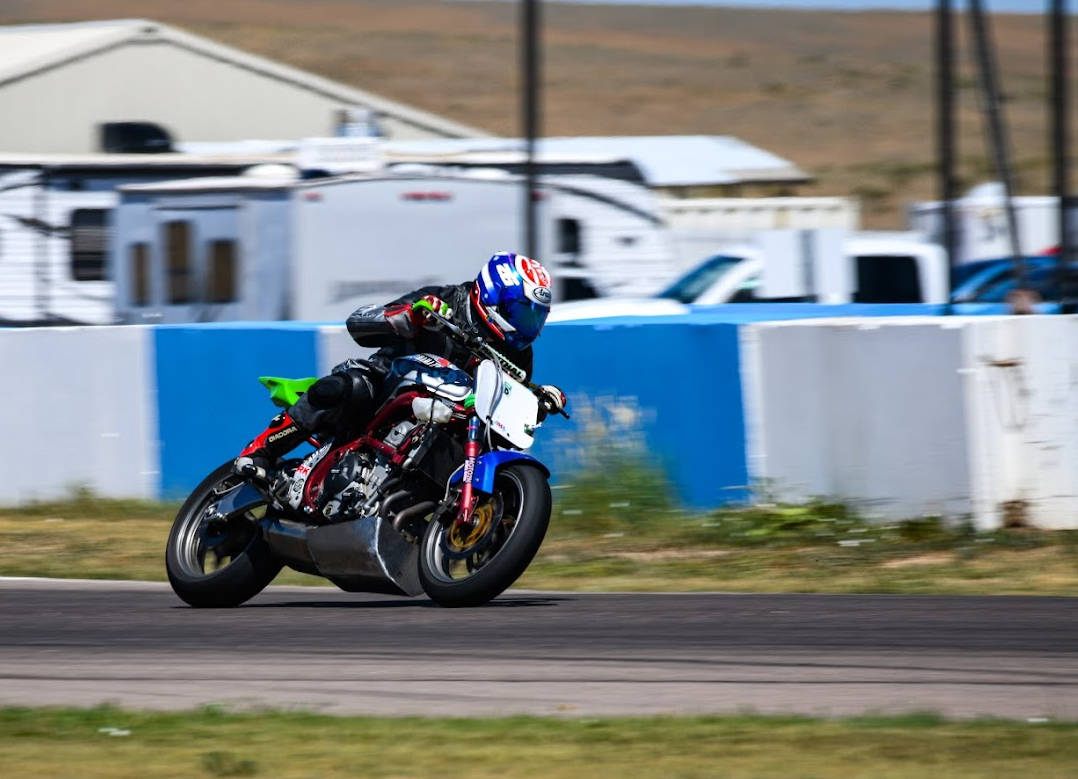
I forget the photographer’s name, but I did pay him for the photo, and he posts on the MRA’s Facebook page if you want to track him down and see the rest of his work.
Repairing Crash Damage
It was a pretty mellow lowside crash, so only a few things needed repair or replacement, and I didn’t experience any nasty surprises while doing it. Those things were
- Handlebars
- Left side foot peg
- Tail section
- Left side swingarm spool
- Tear in race suit
I had an extra set of bars from my dirt bike and used those. A new grip went onto the left side. I ended up replacing the foot pegs with a very trick pair of ZX7R rearsets made by Woodcraft. I can’t say enough good things about Woodcraft. I’ve owned a lot of their parts over the years, and I really like their stuff 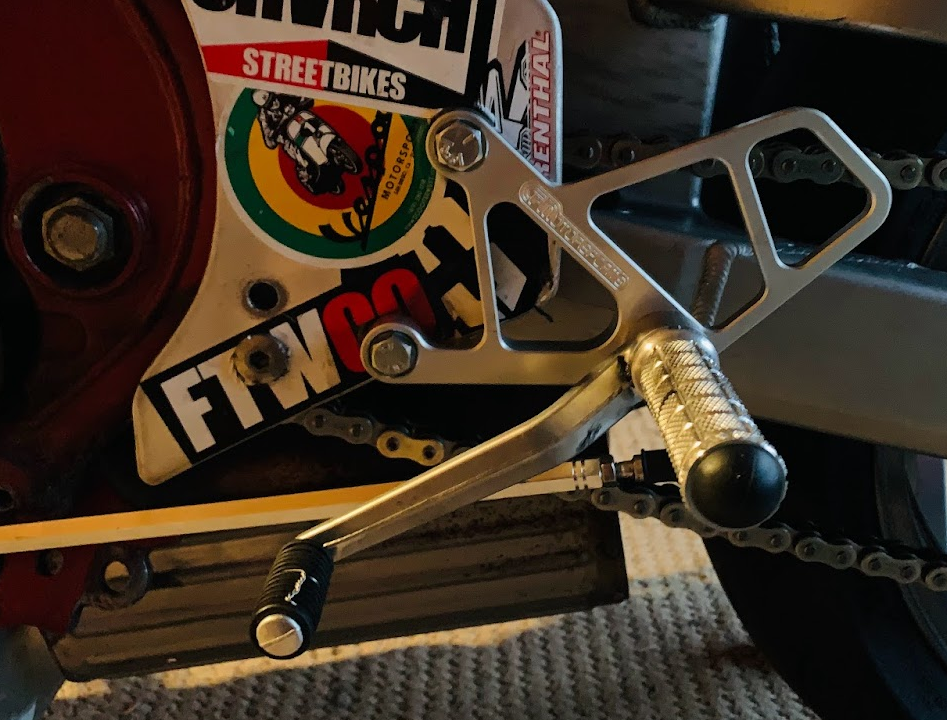
Unlike the pegs I was using, these DO NOT FOLD. They also have a nice knurled metal surface on them that will help my feet to stay in place under load. The pegs themselves are pretty cheap to replace, and I think they’ll help to keep the shifter from breaking if I happen to hit the ground again. I went ahead and got a new shift lever too, which leaves me with the 2 spare shift levers I repaired using the TIG machine. I now have a whole extra set of stock ZX7R rearsets AND the “spare” set fitted to my ZX7R to use if I need them. Hopefully I won’t need them as I’d like to keep that bike as complete as possible at all times!
I used the TIG machine to weld a new 8mm bung to the aluminum swingarm. Again, the weld isn’t pretty, but the swingarm is straight and the bung hasn’t broken off after hitting it with a hammer and raising the bike up with a stand multiple times. While I had the welder out I revised the belly pan to make it look a little slimmer and more refined, let’s call it version 1.5.
Also used the TIG machine to fabricate a new sub-frame after cutting more of the stock sub-frame off of the bike. I used the tail section I’ve had hidden in the basement for almost 10 years off of my old Honda RS125 (NX4). I painted it green to match the ZX10R tail I ruined.
I bought new leathers to replace the old ones because they were really old and too big for me anyway. And as planned, I paid for a race license and got my officially official MRA racin’ number…
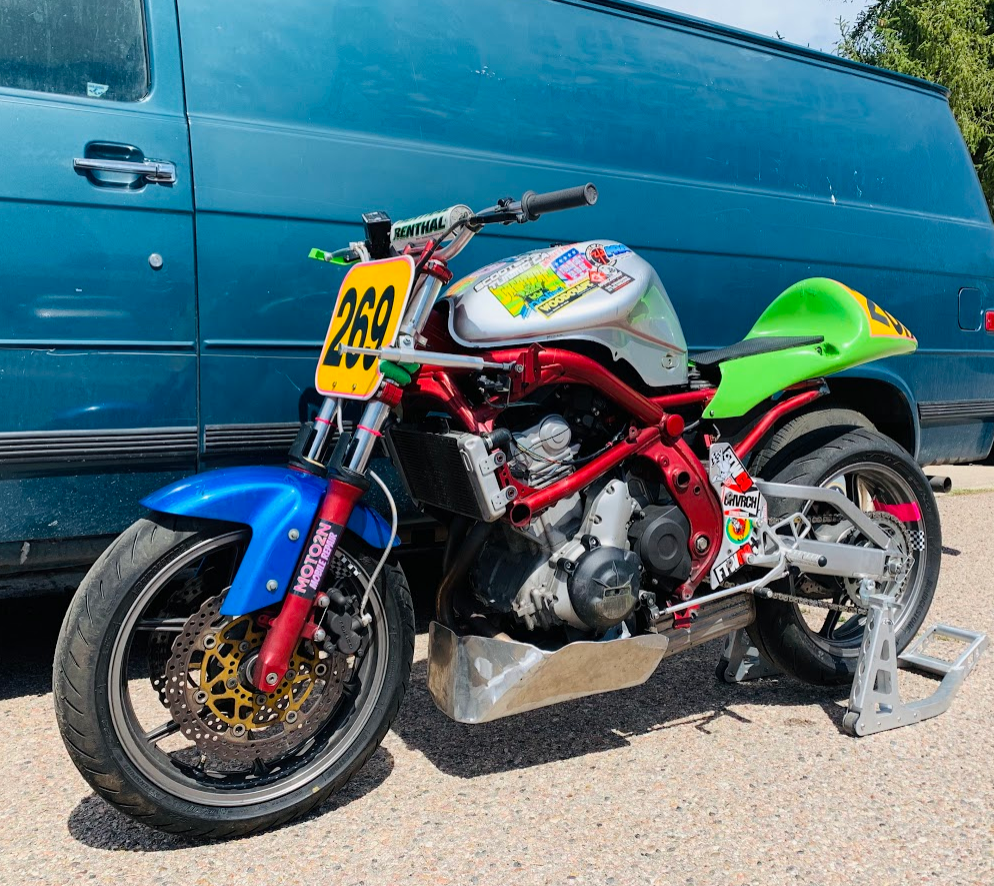
And with that, we are ready to race come Round 5 on August 6th in sunny and dry Pueblo, CO. I’m signed up for exactly one race on Saturday, the lightweight endurance class. At future events I may sign up for more races to include lightweight GP and Supertwins GTU, but at this one I want to be able to take my time and spend more time checking things out. I think the bike’s looking better than ever, and I’m looking into getting even more instruction before I make the jump to upgrading my front suspension, slick tires, and using tire warmers.
THANKS FOR READING! I’ll do another “race report” post after August 6!